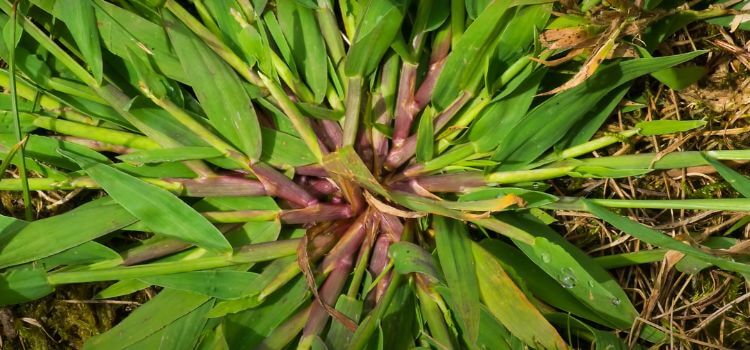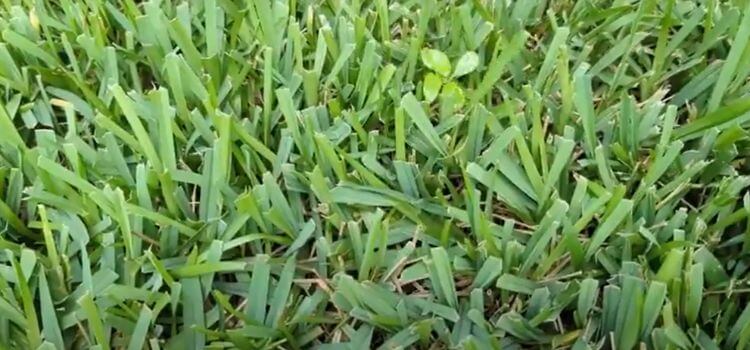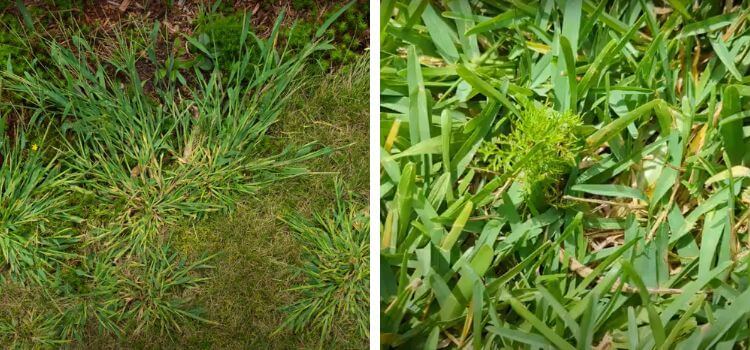As an Amazon Associate, I earn from qualifying purchases.
Crabgrass and St Augustine grass are popular turfgrasses worldwide. Both these types of grasses have their benefits and drawbacks, making them suitable for different conditions and purposes.
This article will discuss the differences between crabgrass and St Augustine grass to help you choose the best option for your lawn or garden.
What is Crabgrass?
Common weed crabgrass can quickly take over lawns and gardens if it is not kept under control. It is an annual grass that grows low to the ground with long, sprawling stems and broad leaves.
Crabgrass blossoms in warm, sunny conditions and can quickly spread through its prolific seed production.

Maintaining a healthy, thick lawn with proper mowing and watering techniques is essential. It is also possible to stop crabgrass seeds from sprouting by using pre-emergent pesticides in the spring. Post-emergent herbicides can also be used to control existing crabgrass plants.
You need to pay attention and move quickly to stop crabgrass from spreading on your lawn. Understanding and controlling its growth habits may keep your lawn healthy and lush.
What is St. Augustine grass?
St. Augustine grass is a popular warm-season grass with dense growth and heat and humidity constancy. A common southern lawn grass is dark green and coarse.
St. Augustine grass uses above-ground stolons to fill barren patches and generate lush turf quickly. This grass can tolerate shade but prefers full sun, making it suitable for different lawn situations.
It requires regular watering and fertilization to maintain its rich green colour and vigorous growth. St. Augustine grass is susceptible to some diseases and pests, so proper lawn care and maintenance are essential for its health.

Overall, St. Augustine grass is popular for homeowners looking for a beautiful, resilient lawn in warm climates.
Crabgrass Vs. St. Augustine grass: Comparison
St. Augustine and Crab Grass are famous grass types used in lawns. While both are capable of producing a lush, beautiful lawn, there are some critical differences between the two that homeowners need to be aware of before making a decision.
The most significant changes between crabgrass and St. Augustine grass are shown in the table below.
Crab Grass | St. Augustine |
Light green color | Dark green color |
Grows in warm and sunny climates | Grows in warm summers and mild winters |
Sensitive to diseases and pests | Disease-resistant |
Needs frequent mowing | Needs less frequent mowing |
Here is a detailed discussion of the main differences between the two types of grass:
Appearance
One of the most noticeable differences between crabgrass and St. Augustine is their appearance.
Crabgrass has a light green color and thin blades that grow in a star-like shape. It can get up to 3 feet tall and has flat leaves folded in the bud. It also tends to grow in clumps or patches rather than uniformly.
On the other hand, St. Augustine is dark green with wider blades that create a thick and lush appearance. It has broad leaves rolled in the bud and can grow up to 8 inches tall. It grows more uniformly and forms a thick turf resistant to weed invasion.
Growth Habits
Crabgrass is an annual grass that completes its lifecycle in one year. It usually starts in late spring and goes away when the first frost comes in.
However, it produces thousands of seeds that can remain inactive for years, making it an ongoing annoyance.
On the other hand, St. Augustine is a yearly grass that grows back from its roots every spring. It grows slowly but steadily and can form a thick turf if nicely maintained.
Climate Tolerance
Another factor to consider when picking between crabgrass and St. Augustine grass is their climate preferences.
Crabgrass thrives in warm and sunny climates, making it prevalent in the southern United States. It can also tolerate drought conditions, making it difficult to control during dry spells.
On the other hand, St. Augustine prefers a more moderate climate with warm summers and mild winters. It is commonly found in coastal areas but can grow well in shaded or partially shaded areas.
Maintenance Requirements
In terms of maintenance, crabgrass and St. Augustine have significantly different needs. Crabgrass requires frequent mowing to keep its growth in check and prevent it from producing more seeds. It also needs consistent watering to blossom, which can be challenging during dry periods.
On the other hand, St. Augustine grows best with less frequent mowing and moderate watering. However, it does require regular fertilization and weed control measures to maintain its dense turf.
Uses
Crab Grass is primarily used as a turfgrass but has some medicinal properties. Its seeds are used in traditional medicine to treat various ailments, including diarrhoea and dysentery.
St. Augustine Grass is mainly used for turfgrass, landscaping, and erosion control. Its dense growth habit prevents soil erosion in slopes or high foot traffic areas.
Disease Resistance
Disease resistance is another important consideration when selecting between these two grasses.
Crabgrass is highly sensitive to diseases and pests, which can quickly spread and destroy your lawn.
On the other hand, St. Augustine is disease-resistant and can fight many common lawn diseases.
Cost
The cost of these two grasses might differ depending on where you buy them. Due to its higher nitrogen, phosphorus, and potassium content, St. Augustine grass fertilizer costs more than crabgrass.
Ultimately, the grasses’ cost is a factor when deciding which one to use, but the health and vitality of the lawn should be the priority.
Crab Grass Vs. St. Augustine: Which is the Best for Your Area?
It depends on the weather and how much sun your lawn gets. If you live in a warm climate with lots of sunlight, then crabgrass is a good choice. St. Augustine grass is a better choice if you live in a cooler climate with less sunlight.
Augustine grows in clay or loam, while crabgrass prefers sandy soil. Proper identification is crucial to effectively managing crabgrass or St. Augustine. Be sure to consult with a lawn care expert or use online resources to confirm which type of grass you have in your yard.
To prevent crabgrass from taking over, consider using pre-emergent herbicides in the spring before it germinates. For St. Augustine grass, avoid over-fertilizing as it can lead to thatch build-up and increase the disease risk.
Regularly aerating your lawn can help promote better growth and nutrient absorption for both crabgrass and St. Augustine grass. So, be sure to incorporate this into your lawn care routine.
And lastly, keep in mind that a combination of proper maintenance practices and preventive measures is critical to keeping both crabgrass and St. Augustine at bay. So, please don’t neglect your lawn, and be proactive in keeping it healthy and well-maintained.
FAQ
Crabgrass is a type of annual grass that grows in warm climates. It germinates in the spring, proliferates, and dies in the fall. St. Augustine grass is a type of perennial grass that is more tolerant of cold temperatures. It germinates in the spring, grows slowly, and stays green all year.
The pros of crabgrass are that it’s fast-growing and low-maintenance. The cons are that it can be invasive and is not very tolerant of cold temperatures. The pros of St. Augustine grass are that it’s low-maintenance and tolerant of cold temperatures. The cons are that it’s more expensive and grows more slowly.
Crabgrass should be watered every 7-10 days, while St. Augustine should be watered every 5-7 days.
Crabgrass should be fertilized every 4-6 weeks, while St. Augustine should be fertilized every 2-4 weeks.
Crabgrass requires regular mowing and raking to prevent it from becoming too dense. St. Augustine requires regular edging and trimming to keep it looking neat.
Conclusion
Finally, Crab Grass and St Augustine Grass have unique characteristics and uses. Before picking, consider the look, growth habits, maintenance, climatic tolerance, and planned usage.
Your demands and preferences will help you choose the perfect lawn or garden grass. Consider talking to a professional gardener to get their advice before making a choice.
With the proper care and maintenance, both Crab Grass and St Augustine Grass can create a beautiful, healthy lawn that you can enjoy all year round.
So, when choosing between these two types of grasses, consider all aspects carefully to ensure you make the best choice for your lawn or garden. Happy gardening!

